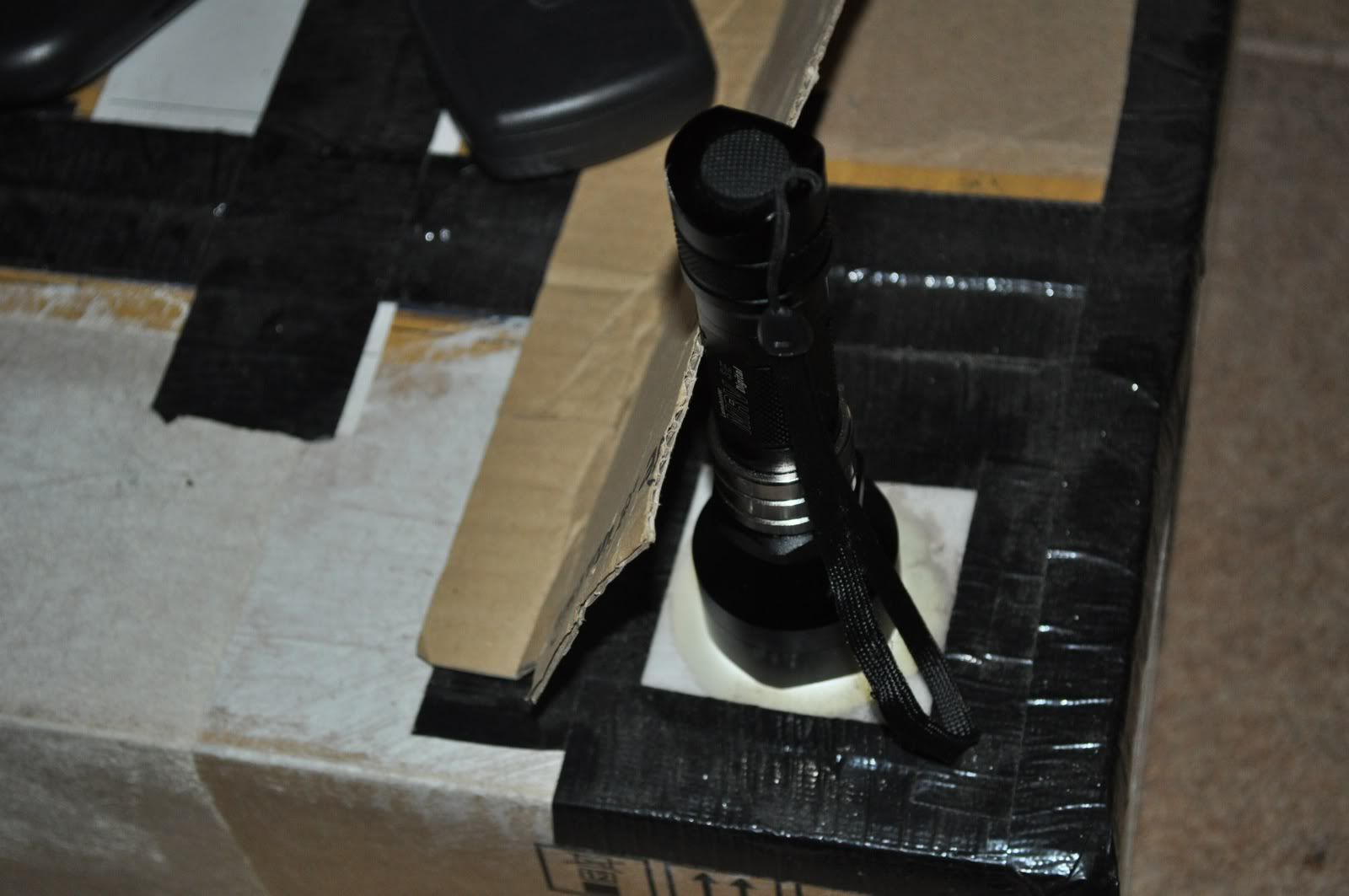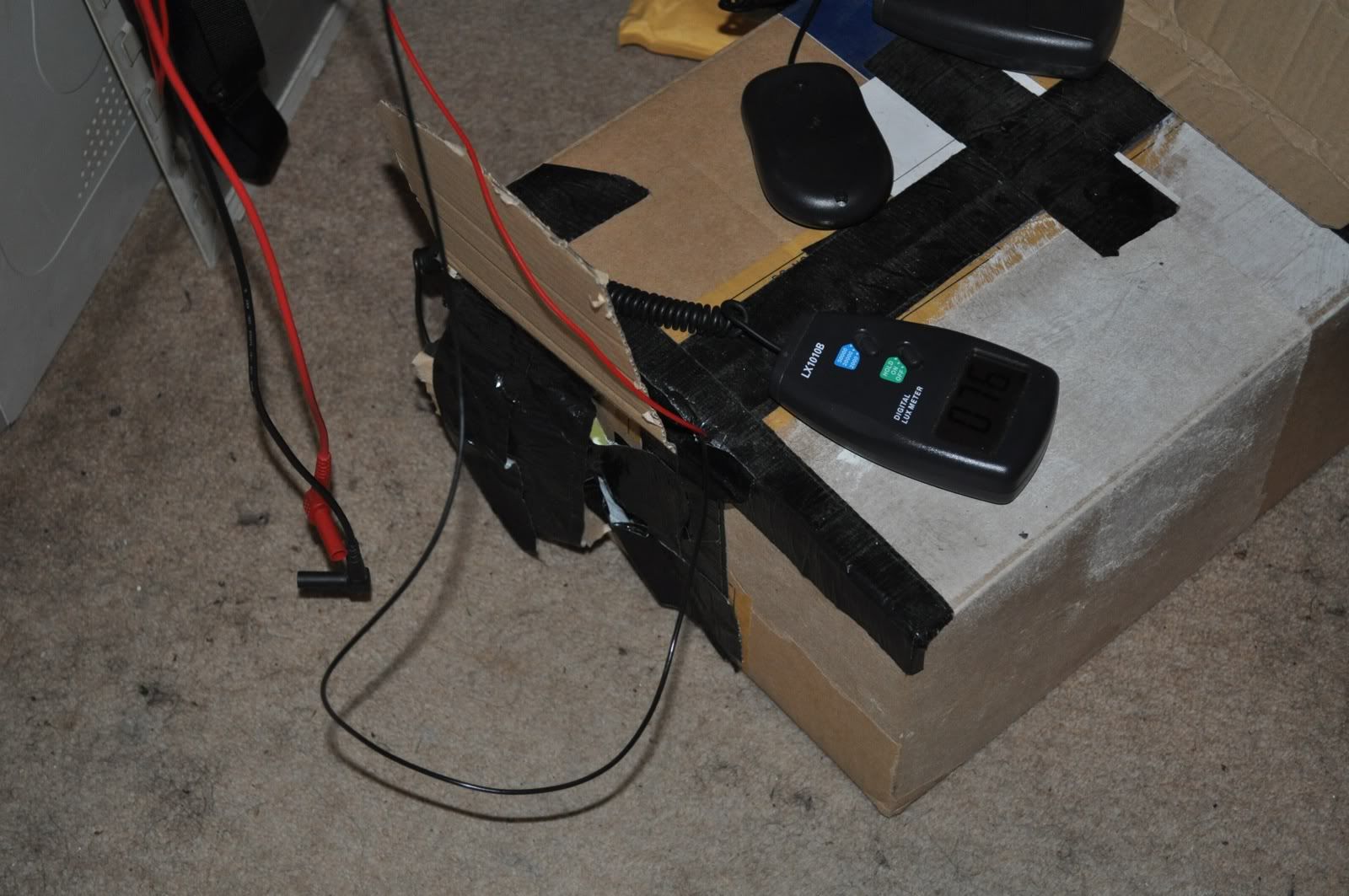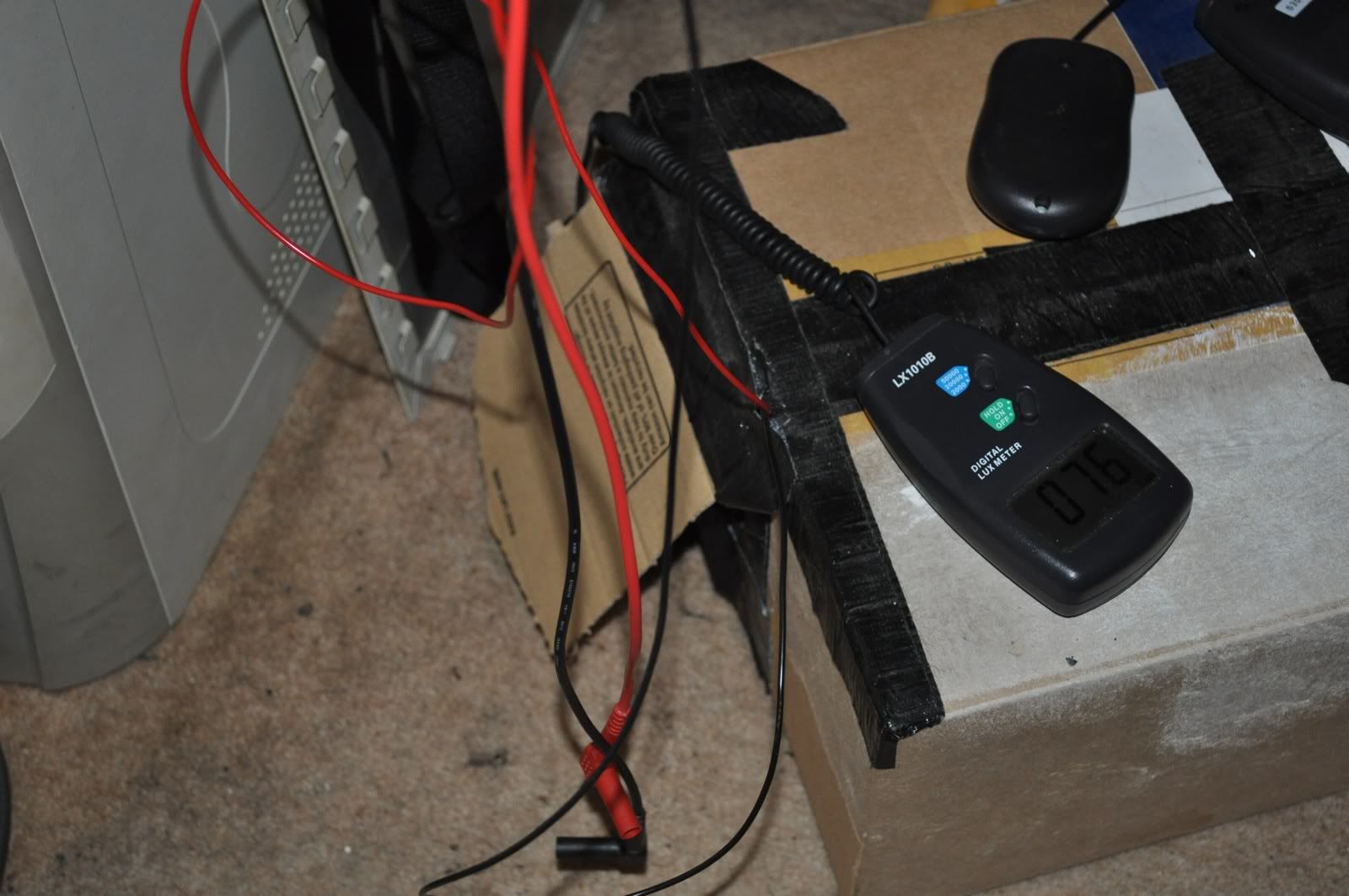Here's how I do it.
It is very evident I need to vacuum up some more dog hair!
The lightbox is a large cardboard box that a small RAID array arrived in. Internally it was painted with 4 coats of white gloss paint and a baffle (also painted white) was put in the middle so that no light can go directly from the entry port to the meter port, it has to bounce off the interior. A circular hole big enough to take a Maglite head was cut in the top at one end and a bit of a plastic milk container (well washed) taped over the top to support and diffuse the light. The box is never opened so it ought to stay clean though the paint will yellow with age. Once the readings start to look odd I will start with another box and try to calibrate it against the old one.
Here it is in use:

At right angles to the light port on the opposite end of the box I cut another hole large enough to take the measuring head of the light meter. It is nothing fancy - it came from DX.
http://www.dealextreme.com/details.dx/sku.20170
It is more or less permanently attached with duct tape over the meter hole. I cut cardboard flaps to exclude as much extraneous light as possible and to keep it clean when not in use.
Here's the meter port end.

The cardboard flap is normally down.

Note the extensive use of duct tape to hold the whole thing together. The lux readings are manual but since the Windows software gives me the time, it acts as the stopwatch. I do actually use a stopwatch for the 30 second and 2 minute lux readings.
The thick black and red leads are hanging off the multimeter. The thin black and red leads are connected to the multimeter and are attached internally to a cheap solar cell from DX.
http://www.dealextreme.com/details.dx/sku.12983
It claims to be a 5V 5mA device. I hate to think how much light it needs to make 5mA - I measure in microamps. The second light meter is the one I use for throw measurements. Since the solar cell is not calibrated in any way I use it only for relative measurements and do not extrapolate lux measurements from it. With a lengthy and tedious set of measurements I might be able to calibrate it but life is far too short - the solar cell probably is non-linear in its responses.
The desktop - this lot lives under my desk.

The multimeter was the cheapest USB connectable device I could find. Maplin no longer sell it. I picked one up on clearance for $20 a couple of weeks ago - this one cost quite a bit more than that. Like all multimeters it gets sold under all sorts of brands all over the world. This one is usable under Linux with the software, whose name has completely escaped my mind. I really should dig out the Linux laptop which will have no problem running two logging meters at once. The Mac variant of the Linux software is unusable on my Mac - which is what I'm typing this on. The Windows box is primarily used for running the meter software. If I could remember what the Linux software was called I could give you other names for the same meter, but my mind has blanked. I know I've written it in here somewhere in a reply to Mr. Admin.
I then export the time and current data to a spreadsheet and convert the times to elapsed time. Excel is a real pain about times that span midnight but I have workarounds. Given that the MRV SE has now been running for 22 hours on low I will have to do more massaging of the data when it goes past midnight tonight which it seems set to do.
The lux readings are done manually by turning on the luxmeter at appropriate times. I get through a lot of 9V batteries for the meters.